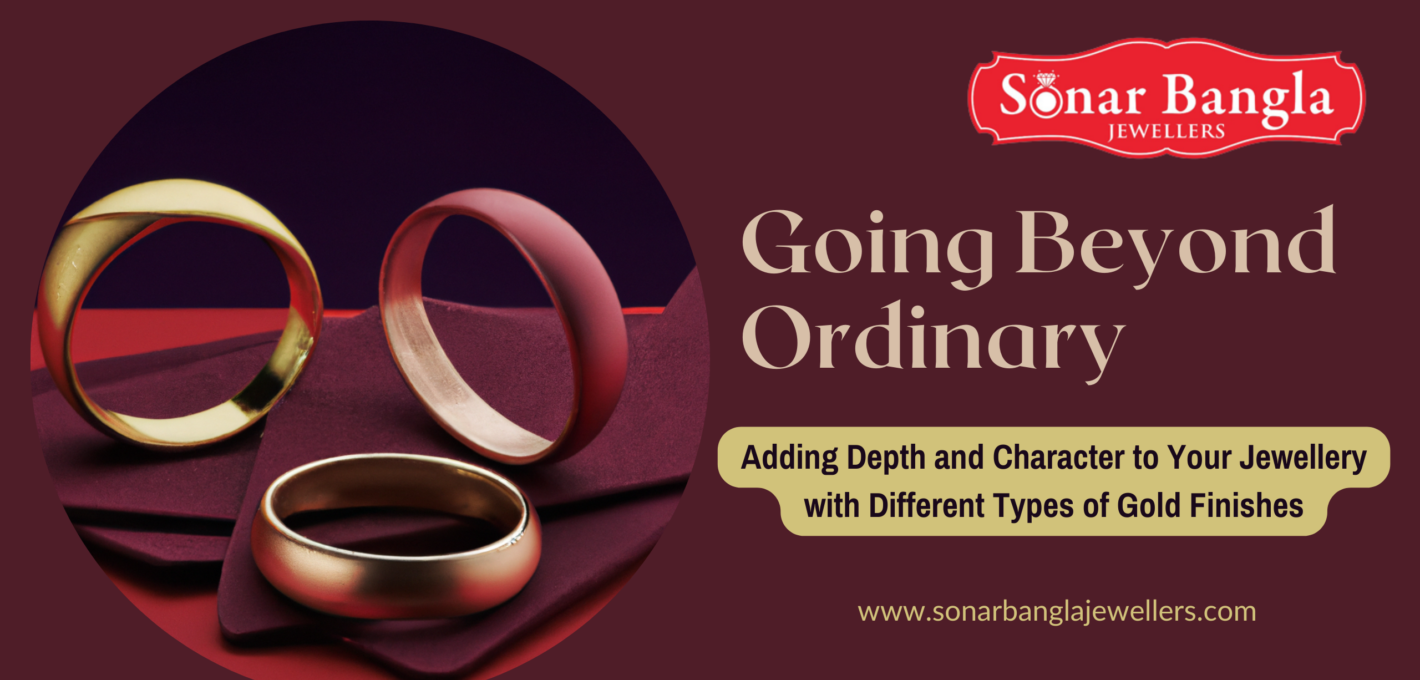
Gold finishes play a critical role in creating unique and beautiful jewellery designs. They can add texture, depth and character to a piece, elevating it from ordinary to extraordinary. There are different types of gold finishes available. Whether you’re looking for a shiny polished finish or a textured hammered one, the type of gold finish you choose can drastically alter the look of your jewellery.
In this blog post, we’ll explore some popular gold finishes which are commonly used in jewellery design. We’ll also delve into some lesser-known finishes. Through this exploration, you’ll gain a deeper understanding of qualities and characteristics of each finish and how they can be used to create stunning jewellery designs.
Popular Types of Gold Finishes for Jewellery
Below are the most common gold finishes used in jewellery designs. Discover how to choose the best one for your individual style.
- Polished – A polished finish is a shiny & reflective surface obtained by buffing and polishing the gold. This finish is smooth and reflects light well. It adds a luxurious appearance to the jewellery.
- Matte – A matte finish is a non-reflective flat surface, produced by sanding gold with a fine abrasive. This finish has a soft & understated appearance which is ideal for achieving a vintage or rustic look.
- Brushed – A brushed finish is designed by running a wire brush over the gold, causing small and visible lines to appear on the surface. This finish gives the jewellery a more textured appearance and is ideal for creating a modern or industrial look.
- Hammered – A hammered finish is created by striking the gold with a hammer. It creates a pattern of small dents and divots on the surface. This finish gives the jewellery a unique & handmade feel which is great for creating a bohemian or artisanal look.
Other Types of Gold Finishes
In addition to the commonly used gold finishes, there are several lesser-known finishes that can add unique textures and depth to jewellery designs. These finishes include:
- Wire Brushed – To get a wire brushed finish, gold is brushed with a fine wire brush to produce small, parallel lines on the surface. This finish adds a light texture to the jewelry and is perfect for creating a contemporary or minimalist appearance.
- Sandblasted – Blasting the gold with a fine abrasive creates a sandblasted finish, giving it a matte & textured appearance. This polish provides the jewellery a distinctive, gritty texture and works wonders to give it a tough or industrial appearance.
- Bead Blasted – A bead blasted finish is created by blasting the gold with small, fine beads, creating a textured and matte surface. This finish gives the jewellery a soft & subtle texture and is great for creating a delicate or understated look.
- Stone – A stone finish is designed by pressing the gold into a rough surface, creating small and irregular divots on the surface. This finish gives the jewellery a natural & organic feel and is great for creating a bohemian or earthy look.
- Florentine Matte – A florentine matte finish is created by cross-hatching the gold with a sharp tool, creating a matte surface with a diamond-shaped pattern. This finish gives the jewellery a vintage or antique feel which is great for creating a romantic or whimsical look.
Styling Tips for Using Different Types of Gold Finishes
It’s crucial to take the piece’s overall style and aesthetic into account when mixing various gold finishes into jewellery designs. Consider the following styling advice:
- Mix and Match – Experiment with combining different finishes in one piece to create contrast & interest.
- Highlighting – Use a specific finish to highlight certain elements of a design. For instance, a hammered finish on a focal point or a brushed finish on a chain.
- Balance – Achieve a balanced appearance by using an equal quantity of each finish in the design.
- Consider Skin Tone – When you’re going to select a gold finish, take into account the wearer’s skin tone because some finishes work better with some skin tones than others.
- Keep It Simple – When using multiple finishes in a design, keep the overall design simple to avoid overwhelming the piece.
Conclusion
In summary, gold finishes give jewellery designers a flexible tool to incorporate texture and depth into their designs. Designers may develop really distinctive and alluring designs. It highlight the beauty of each individual finish by carefully balancing the mixing and matching of several finishes.
Also taking into account the wearer’s skin tone and avoiding overpowering the piece with too many finishes. Gold finishes are a crucial component of jewellery creation and shouldn’t be disregarded because they provide limitless opportunities to create personalised and ‘one-of-a-kind’ pieces.
